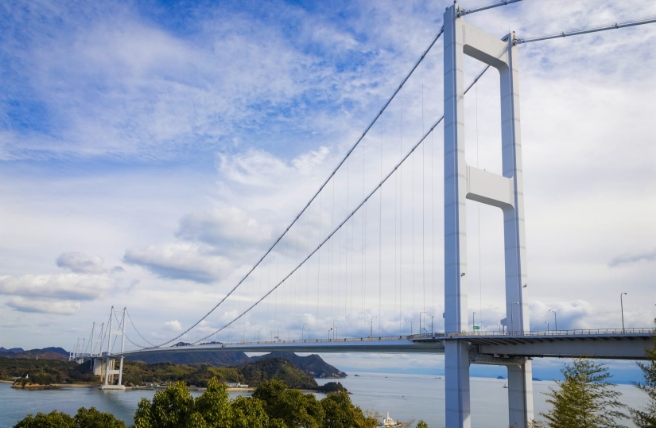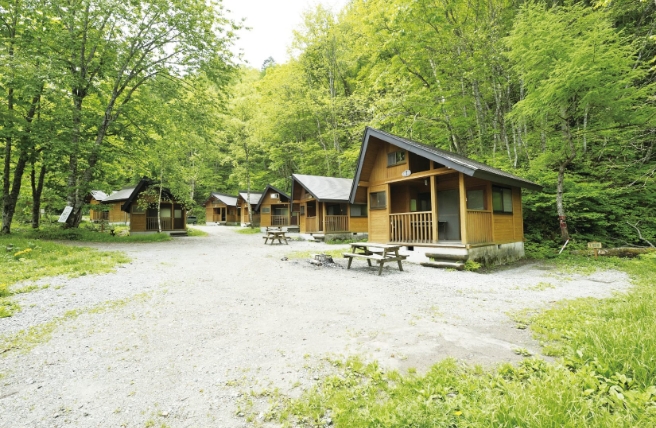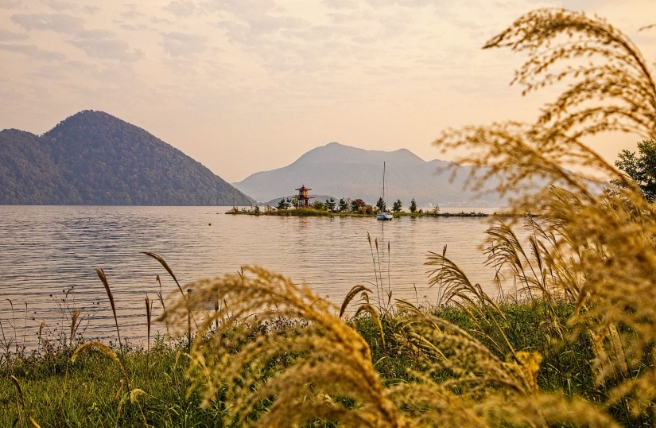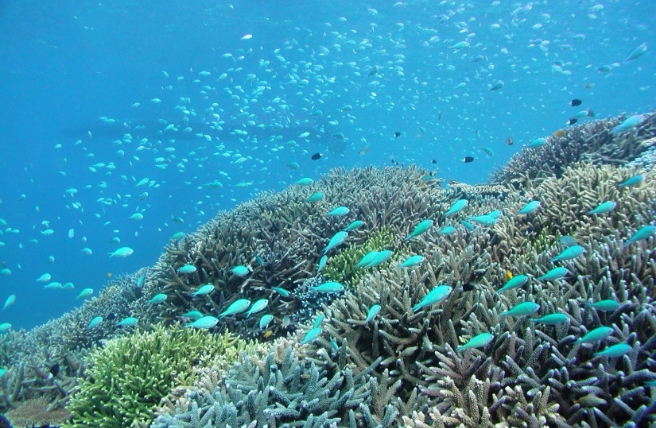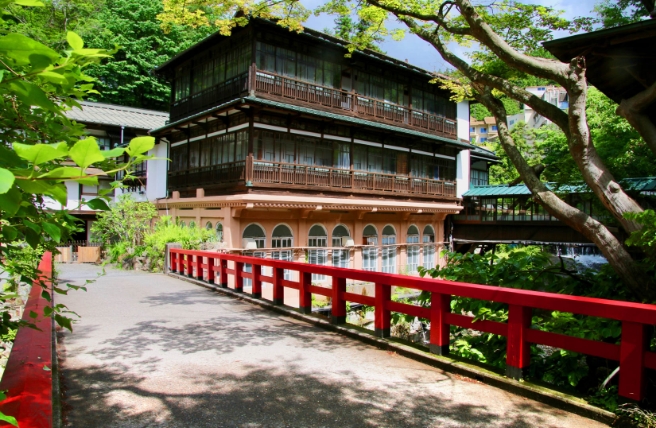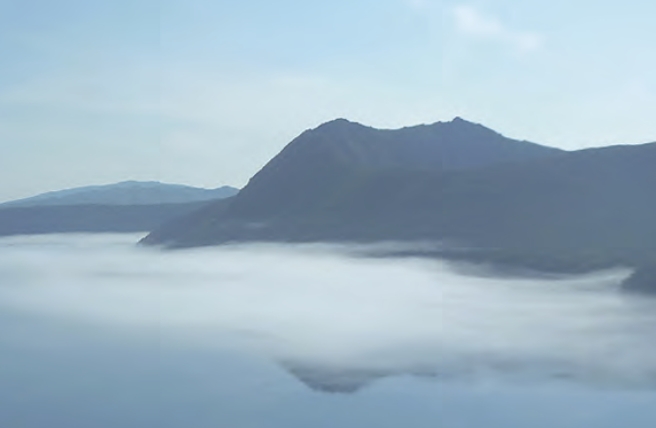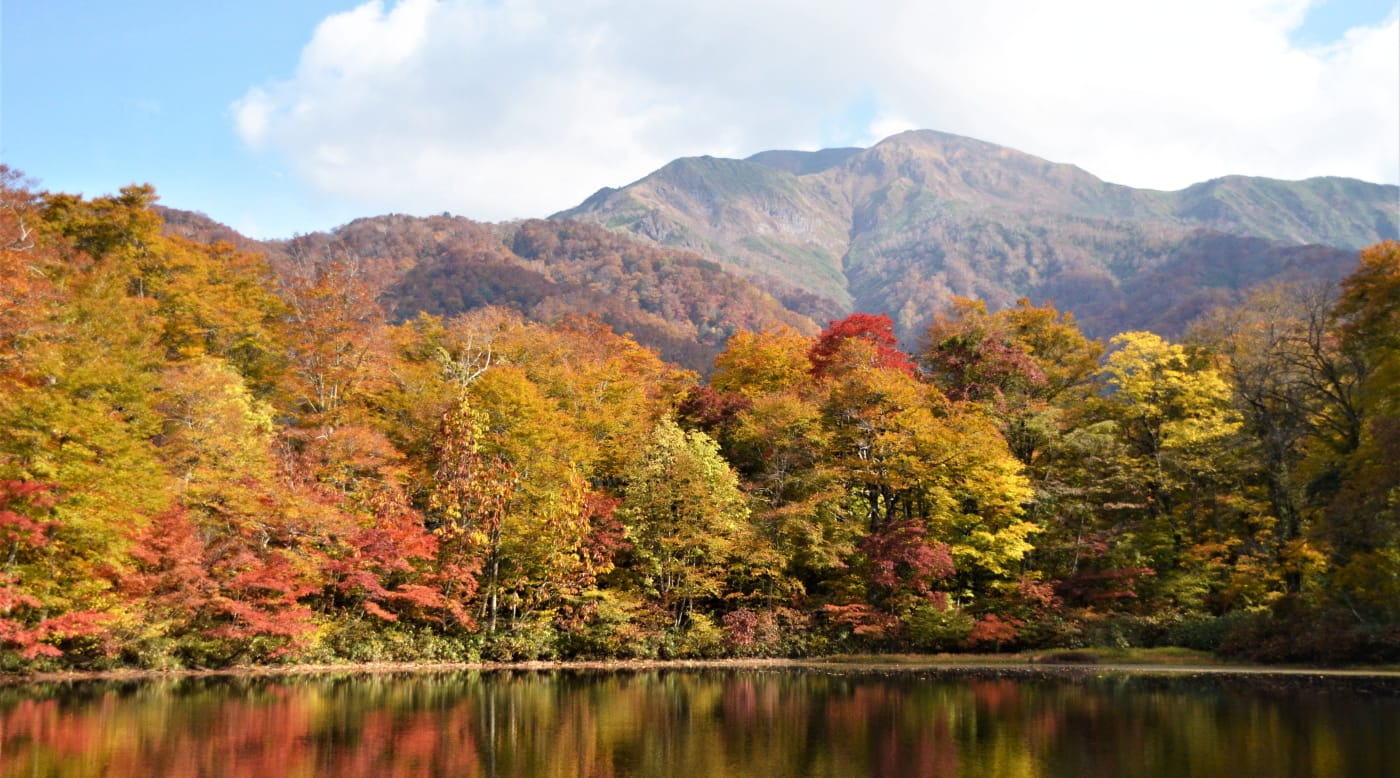Hakusan’s volcanic plains (such as Minamiryuugabanba, Midagahara and Murodo) and primeval forests shelter wildlife from Asiatic black bears to golden eagles to the Japanese serow. You may glimpse them while on its network of trekking trails, such as the popular Bessan-Ichinosedo, Hirasedo and Chugudo routes. As you follow these trails up toward the lofty peaks, the environment around you changes dramatically: Japanese beech forests up to 1,600 meters, then Maries’ fir (Abies mariesii) and Erman's birch to 2,400 meters, and Japanese dwarf pine at even higher altitudes. If you visit in July or August, you’ll find spectacular alpine flowers blooming all around when you emerge from the forest.
Some of the park’s oldest trees are in its southeastern reaches at the venerable shrine of Hakusan Chukyo-jinja. The atmospheric approach to the shrine is lined with cedars, one being the 1,800-year-old Itoshiro Cedar, the fifth largest in Japan. Located on the ancient yamabushi (ascetic mountain monk) path of Mino-Zenjodo, now part of the Itoshiro Hiking Trail, it’s known as the junikakae no osugi, or “giant cedar encircled by twelve people.”
In the southwest of the park, walking trails meander up Mount Akausagi (1,629 m), with views of Hakusan and the park’s other, often snow-covered peaks. The plateau near Mount Akausagi’s summit is a marshy grassland area, where bright daylilies and delicate bamboo lilies bloom in summer.
West of Hakusan National Park is Shiramine, a hot spring town designated as an Important Traditional Buildings Preservation District, where wooden buildings cluster on narrow terraces alongside the Tedori River. Following the course of the river up into the park, you come to Hyakumangan Rock. This gigantic boulder was washed down from the mountains in 1934 during a devastating flood, and reportedly weighs 3.75 million kilos.

Itoshiro Cedar
The park’s main visitor center is at Ichinose, which is farther up the Tedori River and has a nice campsite. From here, the popular Bessan-Ichinosedo Trail heads up Mount Bessan, a peak just south of Hakusan. After around twenty minutes you’ll reach the Iwayamatadani picnic site, where an observation deck offers dramatic views of all three Hakusan peaks. Another forty minutes along the trail there’s a second observation deck, where you can see even more of your surroundings. Trek for another hour to Chiburi Ridge and its primeval beech forest, where the foliage turns a deep, dappled red each fall.
The Shaka-Shindo Trailhead is also near Ichinose, with a trekking route that leads up to Murodo via Kamisori Cave and along the remains of the ancient Echizen-Zenjodo pilgrims’ route. The Betto-deai Trailhead, further up, links to two of the park’s most popular routes: the Kanko-Shindo Trail and Sabo-Shindo Trail. Both go up to Murodo and then on to Gozengamine. Sabo is easier and faster, but the steeper, more exposed Kanko path rewards your extra effort with sweeping views as it traces the ridge line. You can stay overnight in a mountain hut on your way up (reservation needed).
On the northwestern flank of the Hakusan peaks is Hyakuyojo Falls, one of the most dramatically beautiful spots in the park. After winding through dense forest on Seijogahara Plain, the river drops 90 meters over sheer rock into a wide basin. A breathtaking scene in any season, it’s especially memorable in fall, emerging from the dense cover of autumnal colors, and in winter, when the powerful falls break through a volcano-like cone of ice and snow in the basin below.
Nature trails and hiking routes crisscross the far north of the park, including a popular path from Lake Katsura to Mount Ogasa (1,821 m) via Tennomata. Hakusan Shirakawa-go White Road (closed in winter) bisects the park, running from Ichirino Onsen Ski Resort in the west (the closest winter sports center). It leads to the historic villages of Shirakawa-go, with their steep-roofed gassho-zukuri houses, in the east. Along the way, this scenic driving route passes steaming hot springs—such as Chugu Onsen, where there is also a good campsite. There is also a series of waterfalls, plus several nature trails and hiking sites, with the road often skirting above a sea of clouds.

Ubagataki Falls
South of Hakusan Shirakawa-go White Road, more trekking routes approach the peaks of Hakusan from the north. You’ll first reach Onanjimine, then Kengamine, and finally Gozengamine, where you’ll find Shirayamahime-jinja, the head of Japan’s 3,000-plus Hakusan shrines. The Oike-Meguri Hiking Trail follows a loop (around two hours) that takes in the highest peak, Gozengamine and seven crater lakes and ponds. It also takes you past the plains of Murodo, where you can see chocolate lilies (Fritillaria camschatcensis) in bloom from July to August. The Murodo Center is a good base for short eco-tours in the summer months.
From Murodo, a trail heads south toward Itoshiro. On the way you pass another flower-dotted plain at Minamiryuugabanba, where wooden walkways pass delicate Hakusan kozakura (Primula cuneifolia var. hakusanensis Makino) flowers. You may even spot a furry little Japanese stoat streaking past. The visitor center can provide more information on the area’s flora and fauna, and there’s also a campsite nearby, as well as some mountain huts further down the trail.
The Hirasedo trail winds down the mountain’s eastern slope from Murodo, ending at Lake Hakusui. This vast artificial lake changes color from season to season, but is often a sparkling turquoise due to its high sulfur content, with the primeval beech forest of Oshirakawa reflecting in its waters. There’s no better reward for a long hike than a night under canvas in nearby Hakusan Camping Forest, strolling to the water to sit and enjoy the views across to Bessan and Hakusan, framed by the wooded slopes around the lake.

Mount Sanpoiwa
Culture
Hakusan has been a center for mountain worship for centuries. In the year 717 Taicho Daishi, a monk from Echizen (in modern-day Fukui Prefecture) allegedly became the first person to reach the mountain’s summit. Following in his footsteps, other practitioners of Shugendo—a syncretic religion which combines elements of Buddhism, Shinto and other traditions—also trained on the peaks of Hakusan. It became one of Japan's three most famous mountains alongside Mount Fuji and Mount Tateyama.
While hiking has become popular as a leisure pursuit in modern times, its roots in religion are still visible. Zenjo—spiritual training at a sacred mountain—led to the establishment of Hakusan’s zenjodo (trails used by practitioners). Three stations along the route were in use as early as 832, one each on Echizen-zenjodo, Kaga-zenjodo and Mino-zenjodo. Parts of these routes are still in use in the network of trekking trails, and traces of buildings at each station are still visible. Nagataki Hakusan-jinja Shrine at Mino-banba and Heisenji-Hakusan-jinja Shrine at Echizen-banba, in the far southwest of park, are especially atmospheric.

